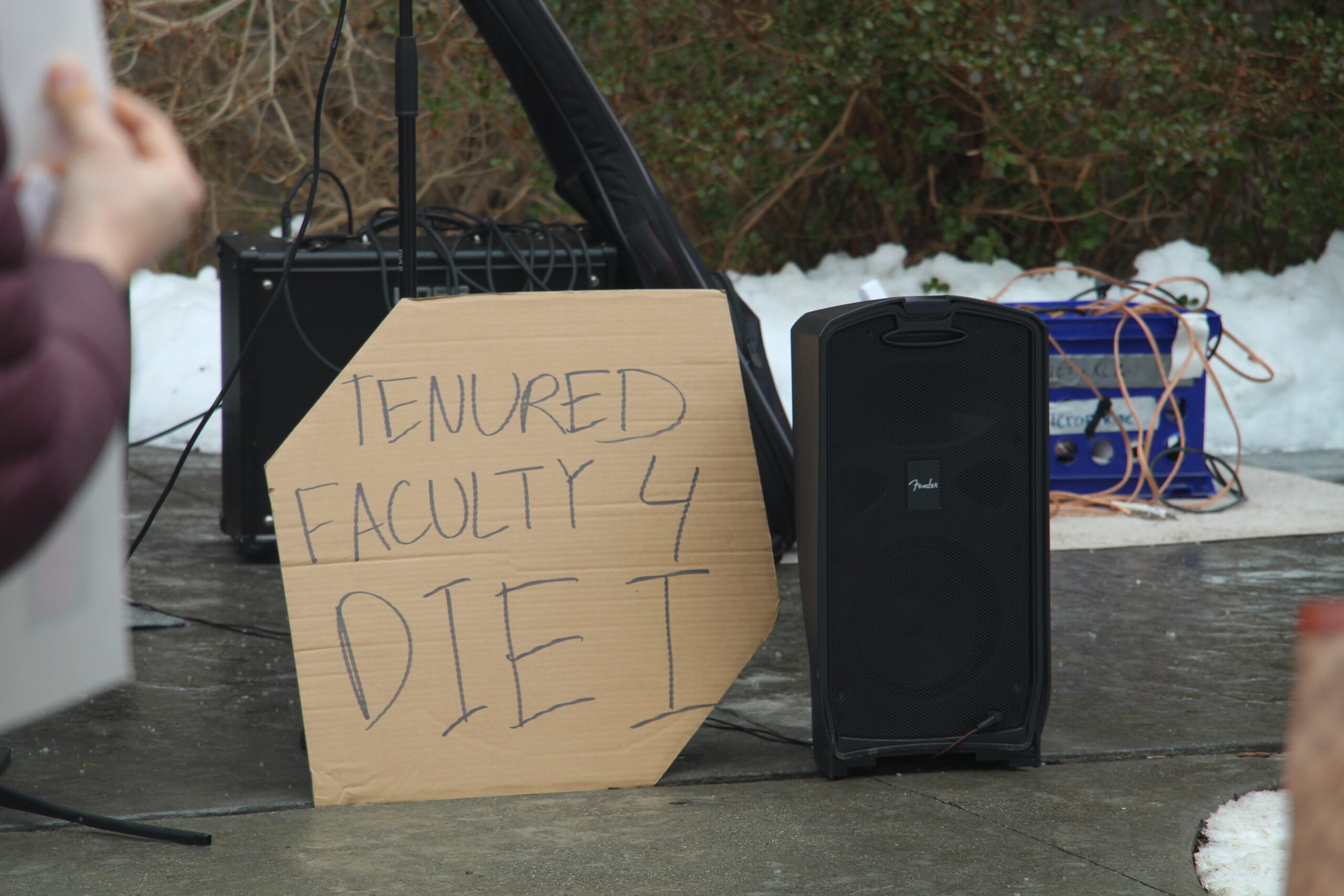Photo courtesy of Amanda Sanders.
Fanning Hall, a building that houses the offices of the upper college administration, has been taken over in protest by students three times in Connecticut College’s history. This was a strong measure taken in order to ensure action from the school. While these protests may have faded from current student memory, they are an important part of the history of protest at Connecticut College. The events have been remembered thanks to the college archives, and Conn’s archivist Deborah Kloiber’s work on the exhibit “Consequently We Insist: Student Protest for Inclusion and Respect” this fall.
The First Fanning Takeover
The first of these protests occurred on May 5, 1971, when there were just 35 “minority students” enrolled at Conn. About 25 student members of the “Afro-American Society” held a sit-in at Fanning Hall, demanding a full-time Black admissions officer and the admission of 71 Black students at Conn by the start of the 1971-72 school year. They refused to leave the building until their demands were met. Charles E. Shain, the President of the College at the time, agreed to fulfill these demands at roughly 6AM the morning of May 6.
By the fall of 1971, there were 80 Black students in attendance at Conn, and a full-time Black recruiter—James Jones—had been hired. These changes were a success, but there were still only three Black faculty members, all of whom worked part time. In response to students speaking against the lack of Black faculty members, the Board of Trustees made a statement supporting “the recommendation of the Commission on Racial Relations that the Connecticut College faculty include members of racial minorities.” This commission was made up of students and staff members who worked to improve the student experience.
The Second Fanning Takeover
The second takeover took place on May 1, 1986. At 4:30 am, 54 students “entered Fanning Hall and chained the doors shut. Their goal in occupying the building was to have Senior Staff set specific goals and timetables addressing their concerns [about minority life on campus],” according to a progress report written about the event. They had a longer list of demands than the first takeover:
“
- Implementation of an Affirmative Action policy by 1988;
- Mandatory sensitivity training workshop for the entire personnel staff by fall, 1986;
- Curriculum/personnel recruitment:
– Creation of a major in the area of Afro-American and/or Afro-African studies by 1990
– Five total courses to be offered in the area of both Afro-American and Afro-African studies by 1988;
- Admissions:
– 15% minority enrollment for the class of 1991 with a 2% increase every 2 years thereafter until the total college enrollment consists of a 20% minority population
- Unity House/Office of Minority Affairs:
- 25% budget increase by the year 1988,
- Hiring an Assistant Director to the Assistant to the Dean of Minority Student Affairs,
- Increased renovation and maintenance of Unity House
- Commitment that no prosecution or punitive action be taken against participants of this peaceful protest;
- Decision concerning the controversy over the Director of the Office of Minority Student Affairs;
- Creation of a committee to monitor the implementation of these demands.”
By 11:20PM an agreement was signed by the students and senior staff that “established several specific goals and timetables.” Yet again, groups were made and goals were set. The “Minority Affairs Committee” was working on reaching many of these. In a progress report written the next year they said a lot of things were changing for the better, but “The College must continue to address the content and quality of the curriculum, its faculty and staff recruitment procedures, programs to insure ethnic diversity in the student body, and support programs for non-majority students. This will require an ongoing systematic proactive approach.” By showing up with specific goals and refusing to step down, students effectively made change.
The Third Fanning Takeover
The third takeover started on May 12, 2016 and went on until the school year ended. Students entered Fanning in protest of the treatment of the student club Connecticut College Students in Solidarity with Palestine and how administration reacted to fliers they had put up. Though no rules or regulations were broken by hanging their fliers, David Canton, then interim Dean of Institutional Equity and Inclusion, sent out an email saying that a bias incident report had been filed, and administration was investigating the incident. Students were angered by this reaction, especially when compared to how many other bias incidents filed by students themselves, were not given campus-wide email updates, or administrative action.
The leaders of the Occupy Fanning movement published a blog during the time. On it they detailed different instances of racism or bias not being handled correctly, and how they wanted more accountability from administration. They wrote “We are a coalition of Connecticut College community members who are committed to collecting, documenting and sharing stories of incompetence and failure under the Katherine Bergeron administration.” Also, that the sit-in “remains integrally connected to the aims of the occupation and exists as a platform for those continuing to occupy the building to voice their discontent, it is also broadening its focus and reinforcing its own commitment to continuing to expose the widespread administrative incompetence and failures at Connecticut College into next semester and beyond.”
There was not as big of a reaction from this takeover, despite the fact that they moved towards demanding “broader institutional reform,” according to a reflection written in The College Voice the next fall, by Jennifer Skoglund. The administration wanted people to know that the issues were not being swept under the rug, they were being taken seriously.
Where Conn is Today
Today, 50 years after the first takeover, and 5 after the last, many things have changed. In 2021, Conn has 28.8% students of color, including international students, so the goal of at least 20% minority students in 1986 has been met. Similarly, 26.6% of the faculty are people of color. These statistics match up with numbers in the U.S., which is about 76% white, as a nation. There are also many programs and offices designed to help support students of color, such as Unity House, the Division of Equity and Inclusion; and other, more specialized programming. Also, there are clubs that aim to “create an environment of inclusivity” as the People of Color Alliance–one of these clubs–describes; others include Asian and Asian American Students in Action, CC Empowerment Initiative, the Gund Dialogue Project and Movimiento Estudiantil Chicano de Aztlan. A goal of the first two takeovers was to build this support and improve the minority student experience, and the school has built this up over the years.
Student activism is still very strong, most recently with the backlash after the November voyeurism incident in a residence hall bathroom. Many students came together to try and bring about change by making signs, sharing resources through social media and showing up in force at a forum. As demonstrated by the three takeovers, the best way to be listened to by administration is to have a large, united front. Additionally, outlining specific goals and refusing to give up is key.









